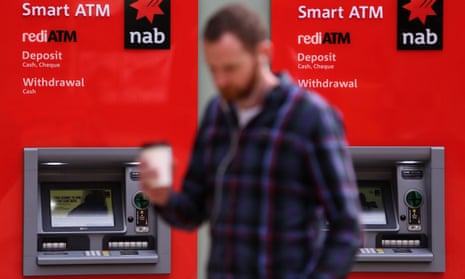Australian banks have buckled under pressure and will do more to fight scams by introducing technology that will block customers from transferring money to some fraudulent accounts.
The banks had initially resisted calls – including from the Australian Competition and Consumer Commission (ACCC) and the Consumer Action Law Centre (Calc) – to block transfers if the name and bank details of the recipient did not match.
A similar measure was introduced in the UK in 2020 and it resulted in a 35% reduction in misdirected payments in the first year.
Consumer advocates said Friday’s announcement by the banks was a “huge” step that would help stop millions of scams annually. But they also want the Australian government to implement “the final piece of the puzzle” by following the UK again and requiring banks to reimburse victims.
This year Australians have lost more than $400m to scams, although the ACCC believes the real figure is likely much higher given many victims don’t report their losses.
Australian banks on Friday announced they would join forces to launch a new scam-safe accord, which would include a $100m investment in a new “confirmation of payee” system to be rolled out across the sector.
Confirmation of payee will help reduce scams by ensuring people can confirm they are transferring money to the person they intend to. Customers should expect more warnings and delays when paying someone new or increasing payment limits, the banks said.
Currently, PayID in Australia puts the onus on the consumer to check the payment is not being misdirected.
To prevent misuse of accounts through identity fraud, all banks will improve technology and controls, and introduce unique identification measures known as biometric checks when opening new accounts.
With 15.4bn transactions worth $2.5tn every year across the banking sector, the design of an industry-wide payee confirmation system would be a major undertaking, the Australian Banking Association said.
Work would commence immediately with the system rolled out over 2024 and 2025.
Stephanie Tonkin, the Calc chief executive, said the reform would make “a huge difference” but called on the government to introduce “mandatory codes, setting out a high bar on liability for scam losses”.
“Inevitably, some [scams] are going to fall through the gaps. And scammers will continue to innovate, unfortunately,” she said on Friday. “So we’re calling for a high bar for mandatory reimbursement to be the final piece of the puzzle included in the regulation.”

The ABA chief executive, Anna Bligh, said the scam accord was “a new offensive in the war on scams”.
“It reflects the banking sector’s unwavering commitment to safeguarding every Australian,” Bligh said. “It outlines the actions every bank will take to protect Australian consumers and small businesses and to harden the system against scams.”
Bligh said recent data showed banks were able to retrieve “$600m in stolen funds” last year.
“To keep up this effort it is critical that government, banks, telcos, social media and crypto platforms work together as part of an ecosystem to stay one step ahead of sophisticated criminal gangs,” the former Queensland premier said.
